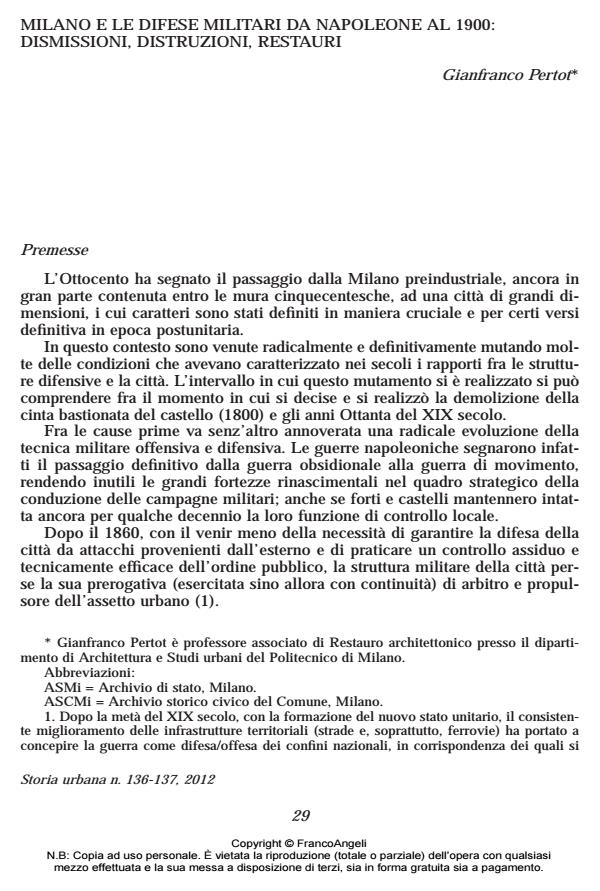Milan and the defences from Napoleon to the 1900s: divestment, destruction, restoration
Journal title STORIA URBANA
Author/s Gianfranco Pertot
Publishing Year 2013 Issue 2012/136
Language Italian Pages 39 P. 29-67 File size 3110 KB
DOI 10.3280/SU2012-136002
DOI is like a bar code for intellectual property: to have more infomation
click here
Below, you can see the article first page
If you want to buy this article in PDF format, you can do it, following the instructions to buy download credits

FrancoAngeli is member of Publishers International Linking Association, Inc (PILA), a not-for-profit association which run the CrossRef service enabling links to and from online scholarly content.
The Napoleonic occupation of Milan brought about the demolition of the ramparts of the castle, a new parade ground, a revolutionary and idealistic city plan (designed by Antolini). With a new concept of war, defense and attack, the city walls lost their main function and were preserved only as tax-borders; some gates of the city became monumental buildings, others became obstacles to be removed; troops were housed in the central part of Milan in a large number of monasteries expropriated at the time of Austrian rule. During the nineteenth century, there were no changes until the Unification of Italy. In the new political and socio-economic age, the population of Milan quickly grew, the city bypassed its walls, and the problem of a new urban plan arose, while unscrupulous property investors speculated wildly in the military zones. There were many paradigmatic events: the construction of a new Army District (Quartiere delle Milizie), the reiterated change of location of the parade ground, the agreements between the City and the central military Authority, who traded for military zones and barracks, the demolition of several city gates and pusterle, and of the Spanish walls. It was a process that generated many contradictions, some of which are still unresolved
Keywords: Castle Spanish Walls Destruction Restoration
Gianfranco Pertot, Milano e le difese militari da Napoleone al 1900: dismissioni, distruzioni, restauri in "STORIA URBANA " 136/2012, pp 29-67, DOI: 10.3280/SU2012-136002